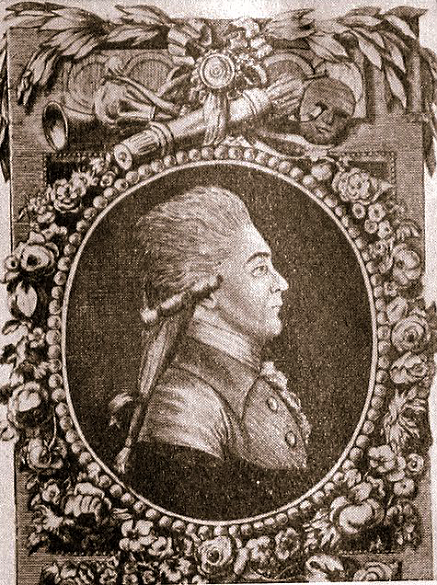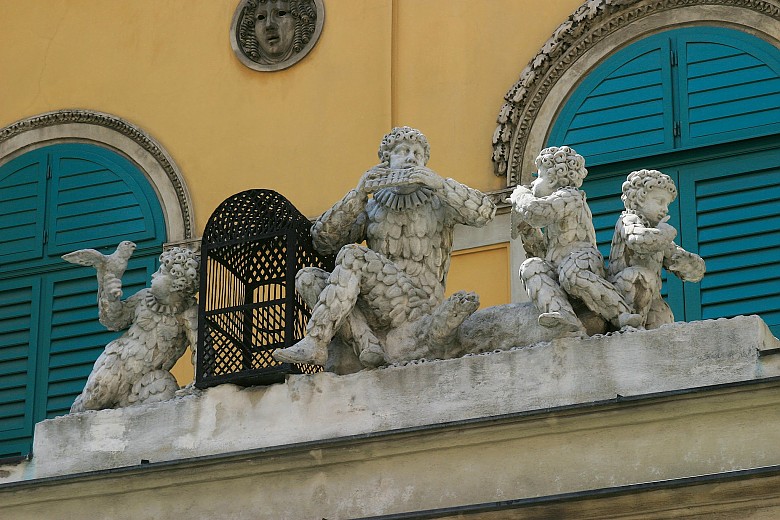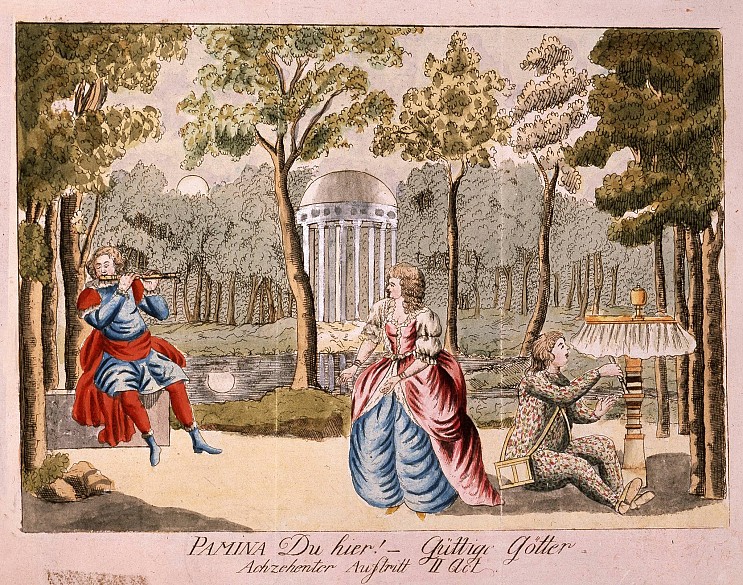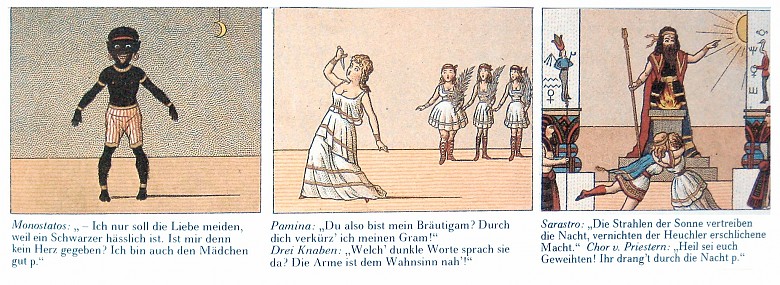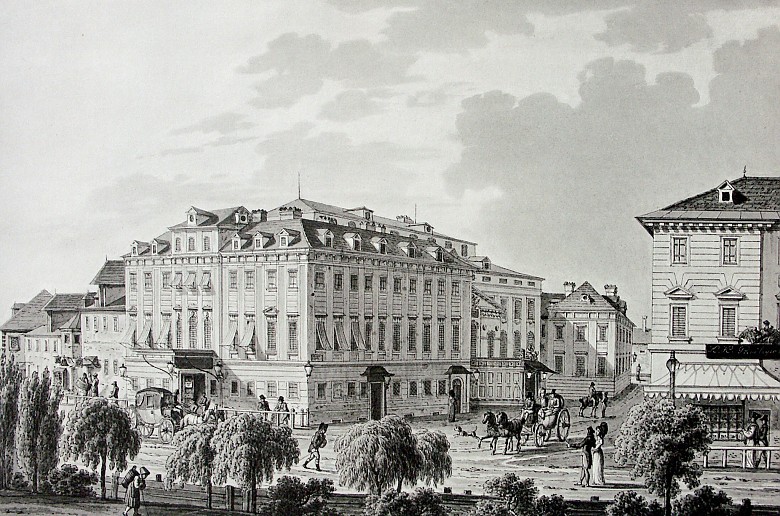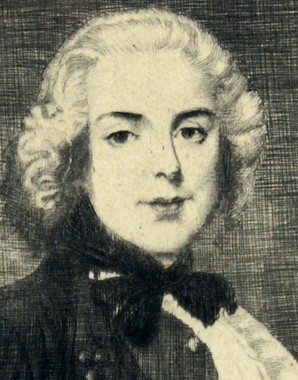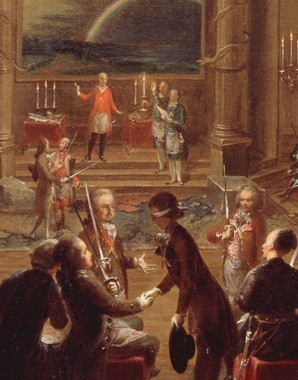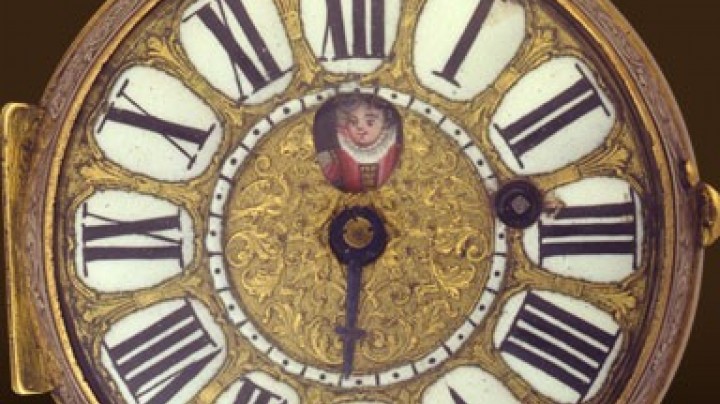‘O Isis and Osiris!’ The Masonic opera, The Magic Flute
In 1791, although afflicted by ill-health, Mozart reached for his quill again at the request of his friend and fellow-Mason Emanuel Schikaneder – and landed a hit: The Magic Flute.
Mozart’s friendship with the elegant theatre director and actor Emanuel Schikaneder (1751–1812), who was five years his senior, began in 1780, when Schikaneder was visiting Salzburg with his troupe. Schikaneder himself played the leading roles in the plays he produced and was especially fond of the German Singspiel: he wanted the audiences to understand the text, and his aim was to provoke them to laughter or tears.
In 1789 Schikaneder returned to Vienna as director of the Freihaustheater in the suburb of Wieden. The Freihaustheater was a huge suburban theatre seating 1,000 within the large Freihaus complex, and the most famous of the many musical theatres built in the suburbs at that time. Mozart became friends with the troupe, a merry, free-spirited band.
Schikaneder wanted Mozart to write a popular opera to his libretto of The Magic Flute. Zauberstücke (fairytale extravaganzas) were very fashionable at that time in Vienna, and made liberal use of artificial thunder and various machines for their effects. Papageno, a Hanswurst-like figure who was played by Schikaneder himself, clowned around in audience-pleasing fashion and sang comic numbers.
At the same time, however, the opera is a paean to the ideas of Freemasonry. It contains elements of the Egyptomania that was sweeping Europe at the time: Egypt was held to be a fount of secret knowledge and mysteries, and was a centre of reference for the ideas of the Freemasons.
Mozart was already gravely ill while he was composing the opera, but conducted the first performance from the piano himself. Sold out at each performance, it was a triumphant success: it premiered on 30 September 1791 and was performed thirty-five times up to the beginning of December. Even Antonio Salieri attended a performance. The box-office takings were so high that Schikaneder was able to build the Theater an der Wien, which opened in 1801.
